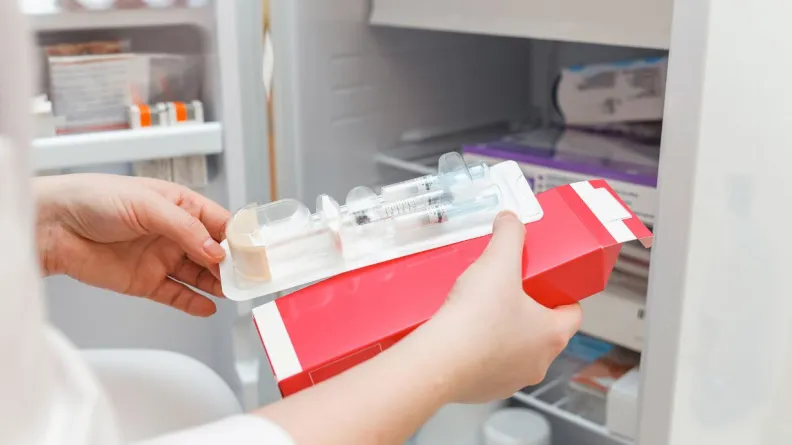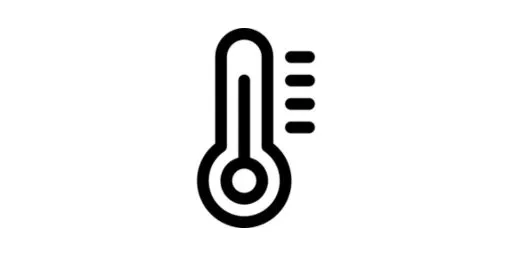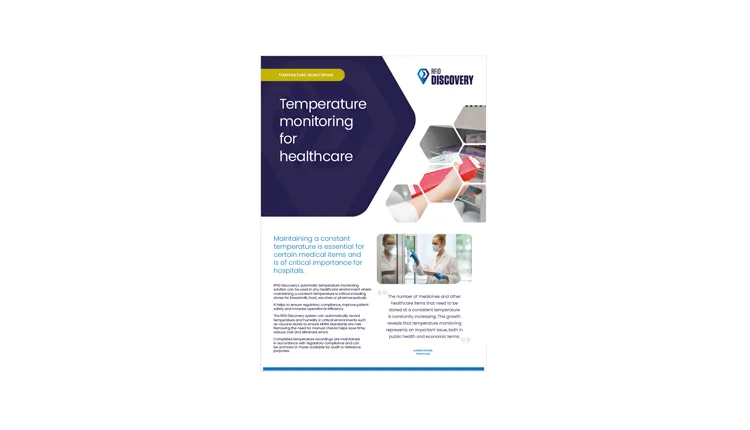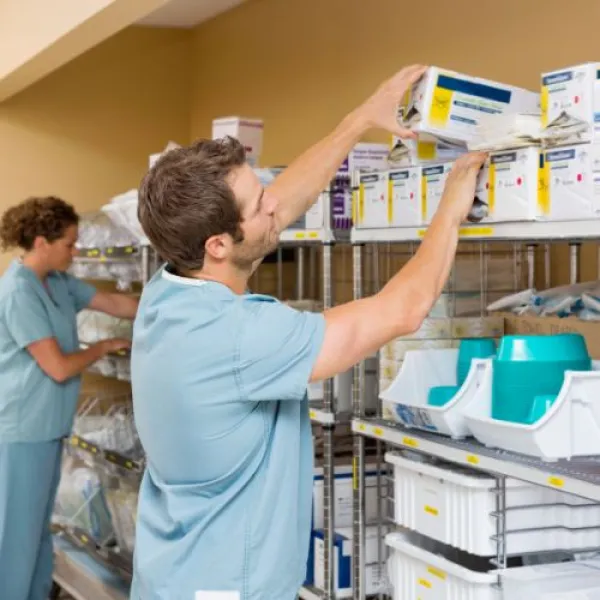Temperature monitoring

Benefits
Automatic temperature monitoring in healthcare helps ensure regulatory compliance, improve patient safety and increase operational efficiency.
The RFiD Discovery system can automatically monitor temperature and humidity in critical environments such as vaccine stores. Removing the need for manual checks helps save time, reduce cost and eliminate errors. Completed temperature recordings are maintained in accordance with regulatory compliance and can be archived or made available for audit or reference purposes.
Where automatic temperature monitoring is used in healthcare
Automatic temperature monitoring can be used in any healthcare environment where maintaining a constant temperature is critical including stores for breastmilk, food, vaccines or pharmaceuticals.
How automatic temperature monitoring works?

Measuring temperature
Temperature sensors use radio frequency identification (RFID) technology to transmit regular readings via an existing wi-fi or proprietary network into a central database. An active RFID tag with an integrated temperature sensor is placed in the environment which needs to be monitored. The tag sends temperature readings at user defined intervals.
Collecting data
Signals are picked up by the network readers and transferred to a central database. For the monitoring of refrigerators and freezers, RFID tags with external probes are used where only the probe is in the refrigerator or freezer and the tag remains outside to ensure that signals can be transmitted successfully to the readers. Where required, humidity can also be measured.
Using the right data
A simple-to-use software interface allows the user to set parameters for maximum and minimum temperatures and enable instant alerts if values are outside the specified range. Staff can be notified in many different ways including by email, audible alarm, on screen pop-up window, pager, VOIP phone, badge alert and text alert. The software interface also provides access to data for compliance reporting, auditing or analysis.

Find out more about our temperature monitoring solution.
Download brochure


